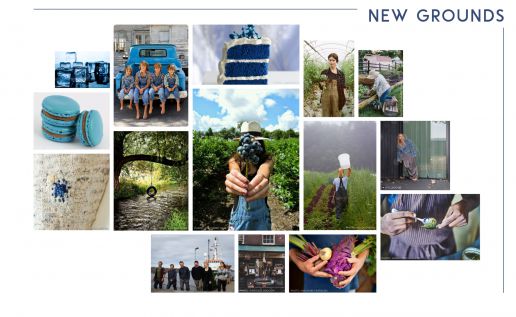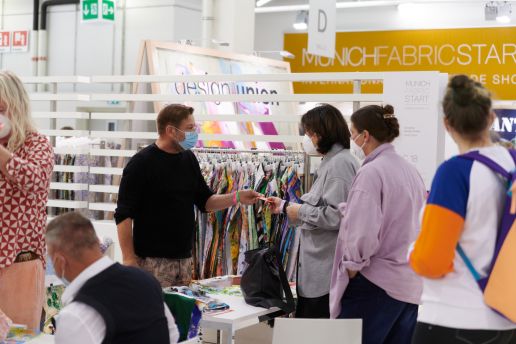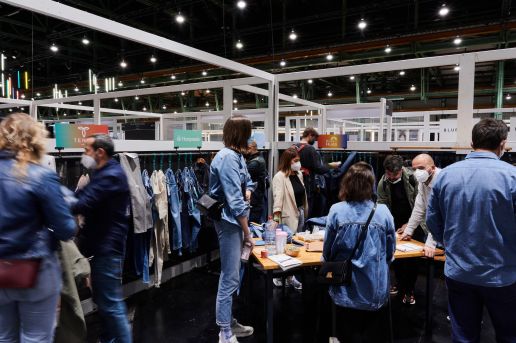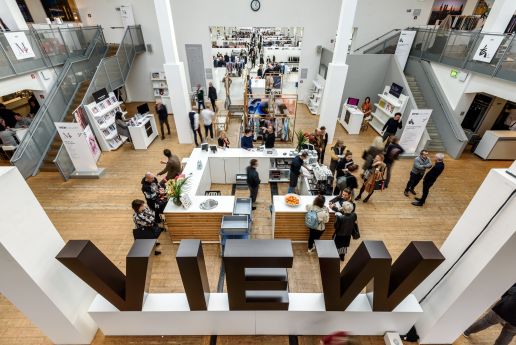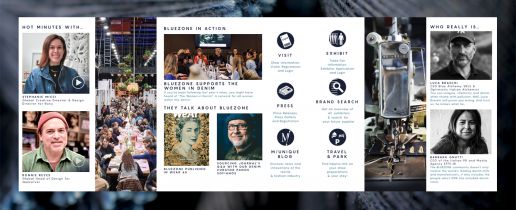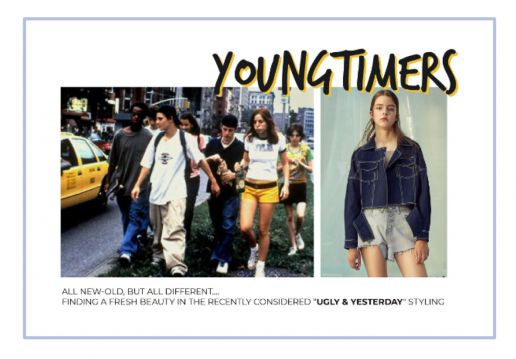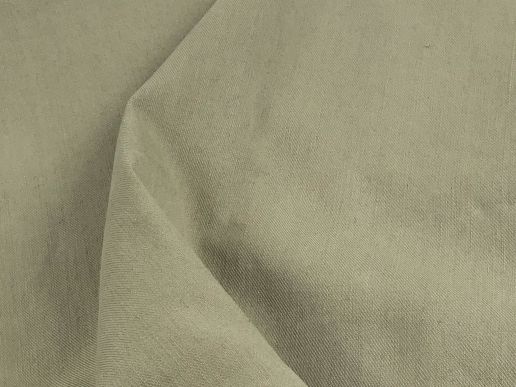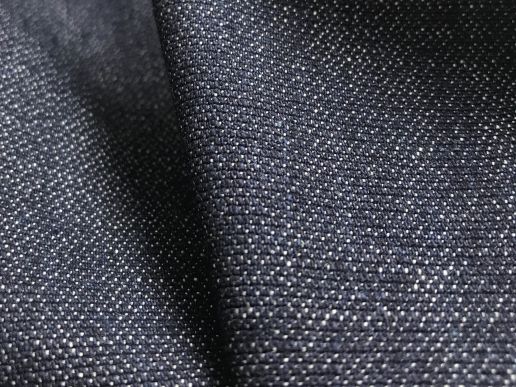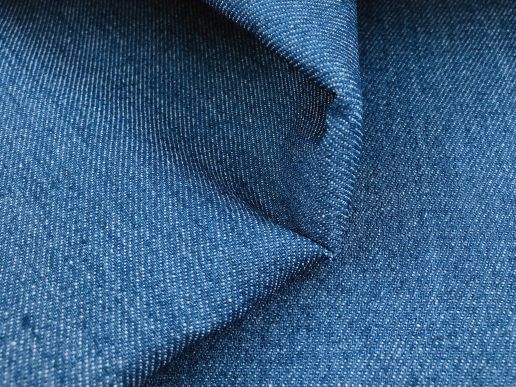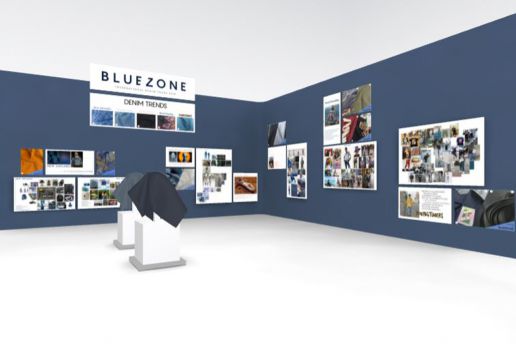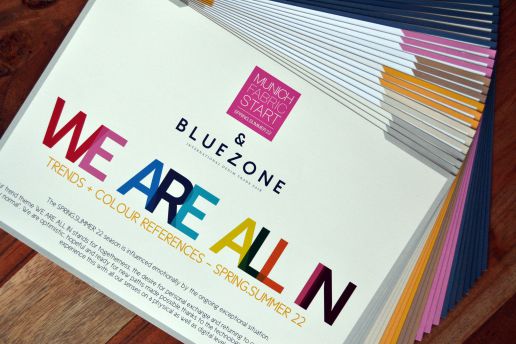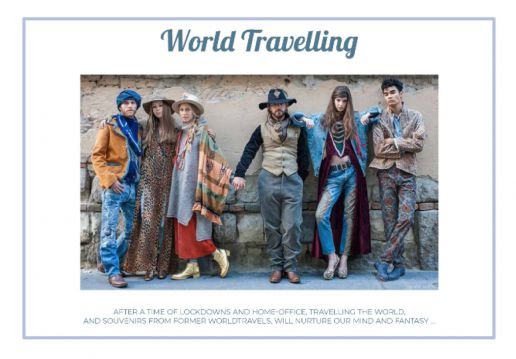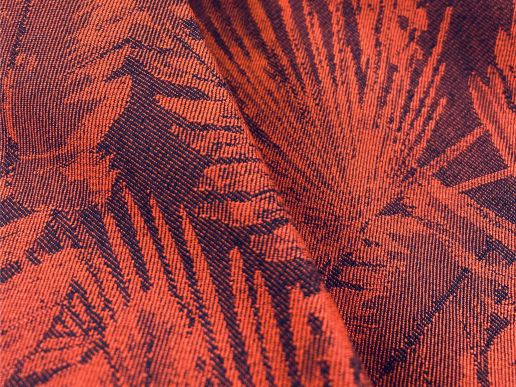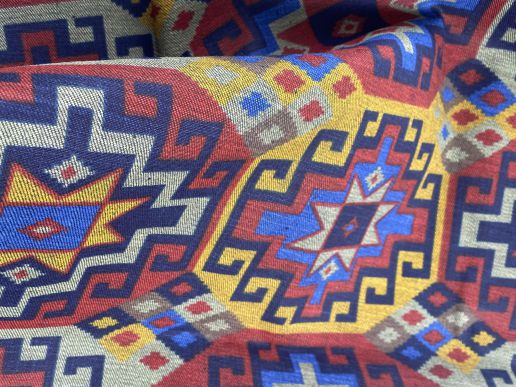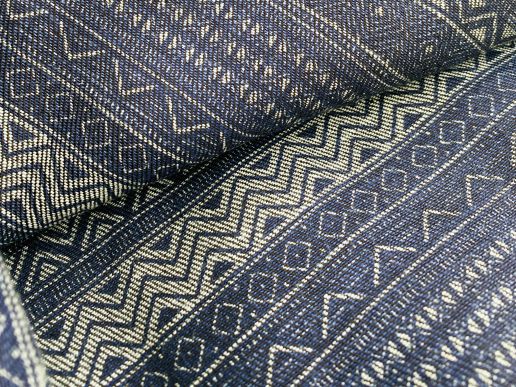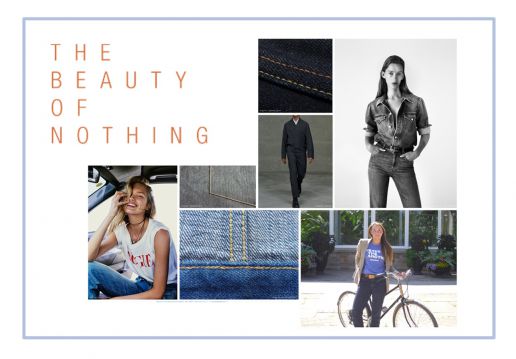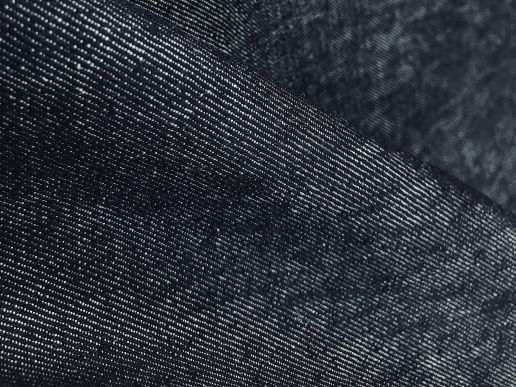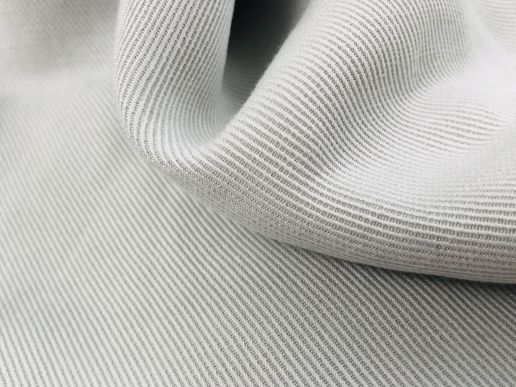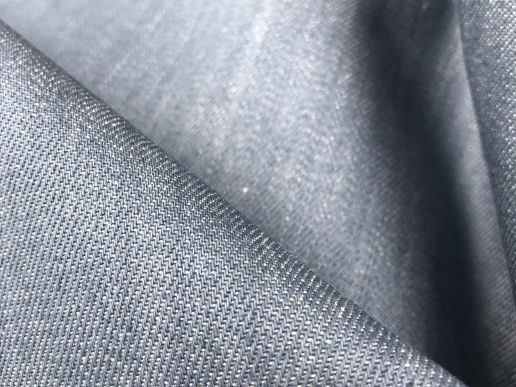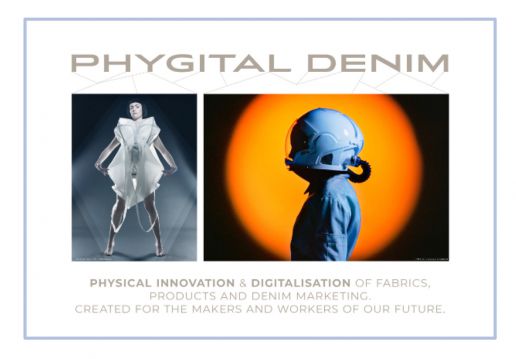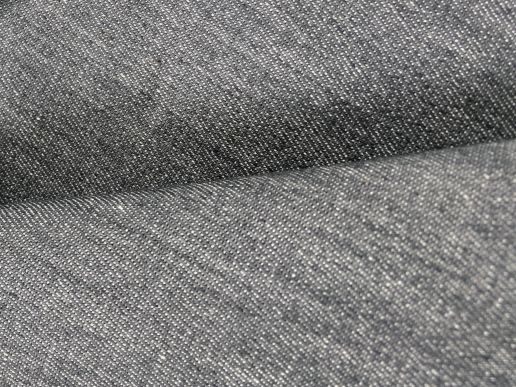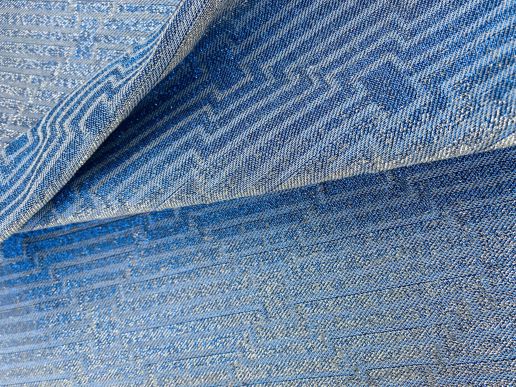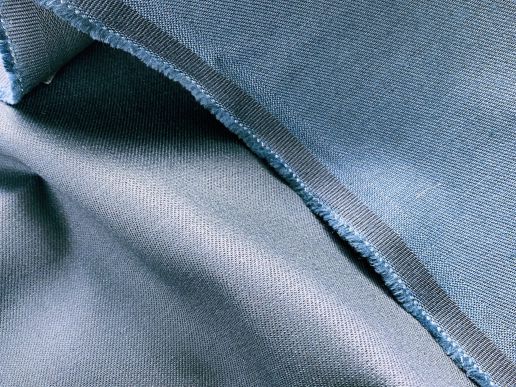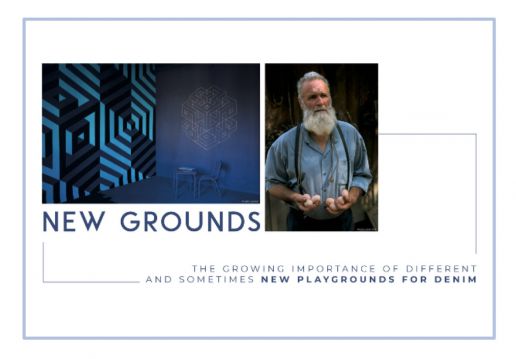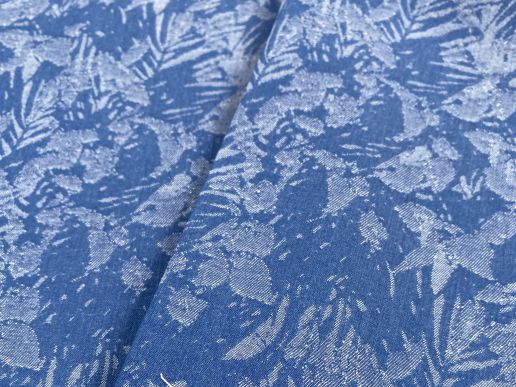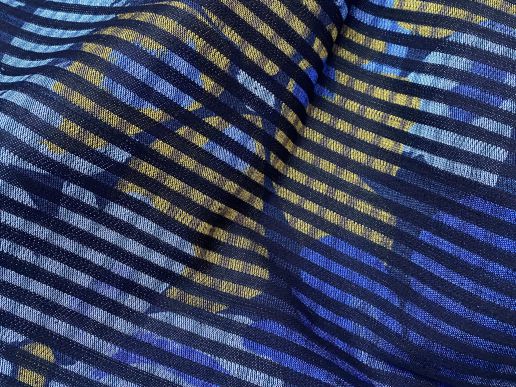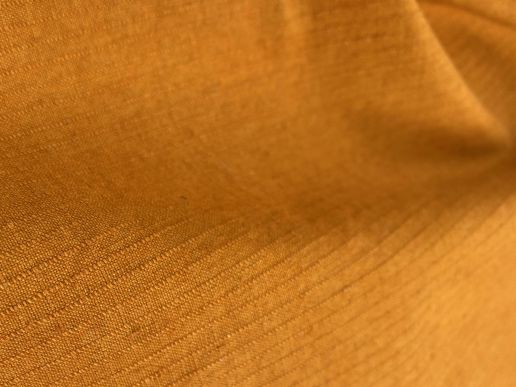Technology
Advancements and Innovation: Who is Busy Solving a $4.6 Billion Problem?
A ubiquitous wardrobe staple, denim is one of the most prevalent fabrics of our time. Developed through the ages, those behind the widely used material are on a mission to transform the global apparel business into a cleaner, more ethical and more sustainable industry.
It is no secret that denim production is negatively impacting the environment.
Still, the good news is that more and more manufacturers, brands, retailers, and consumers are making an immense effort to undertake the issues related to the production of denim. Furthermore, driven by buzz words like ‘sustainability’ and ‘recycling’, many denim businesses are turning to new technologies to help them attain the most sustainable system possible.
When the denim industry becomes more sustainable, we need a new approach. The good news is that the technology has advanced to the point where we can make a big difference in reducing the environmental footprint of denim. Here are some great examples of some of the revolutionary approaches that have been introduced to the denim industry in the past few years.
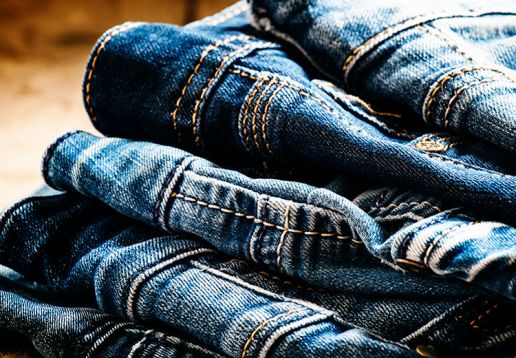
Picture credit: Ecotextile News
Smart Factory 4.0: Denim’s Greenest Ecosystem
Crescent Bahuman is taking the denim industry on a journey. Understanding the need for the industry to digitise, Zaki Saleemi, vice president of Crescent Bahuman, believes that one of the ways of doing this is through intelligent decisions supported by data.
Saleemi explained to Sourcing Journal that the intelligent factory is designed to give on-site managers real-time information on shop floor activity and other vital sustainability-related metrics like water measurements. The upgrade is a digitization plan that can help a denim company “get organised, get connected, get insights, and get optimised”.
Another exciting development is that Crescent Bahuman is also implementing the blockchain-enabled PaperTale, which shows the entire map of the supply chain – where the cotton came from, where it was manufactured, and where it got converted into fabric.
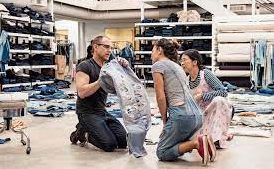
Picture credit: Levi
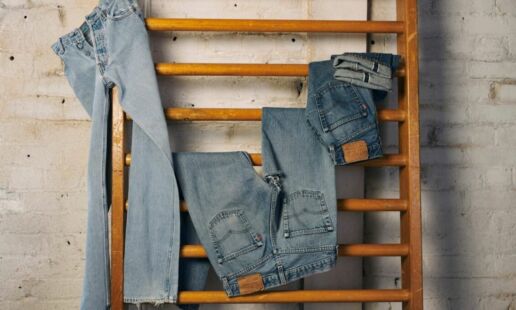
Picture credit: Levi Strauss
Levi’s Earth Conscious Robotic Technology
The majority of jeans are washed for hours to achieve that perfect blue colour, and the result is that the dyes end up polluting the groundwater. Looking back to a time when new innovation was leaving its mark on the denim industry, Levi came up with laser technology that made creating ripped and washed jeans easier and more efficient.
Looking to reduce the man-hours put in by designers trying to figure out the perfect fade and the time factory workers spend sandpapering the jeans, Levi’s is also determined to lessen the harsh chemicals that give jeans that much sought after faded look.
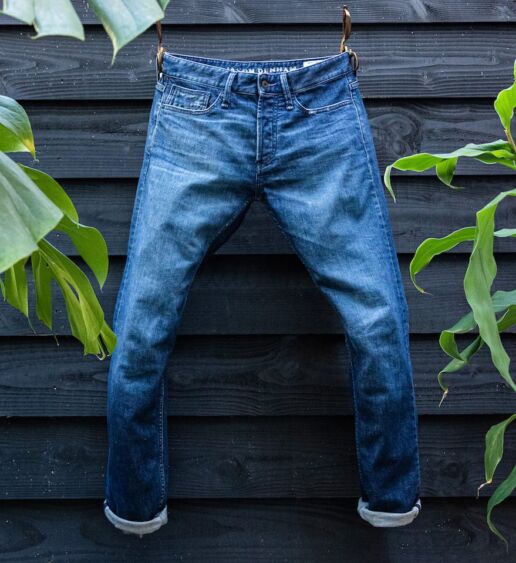
Picture credit: The Spin Off
Probing the use of Alternative Raw Materials
Exploring alternative raw materials such as hemp or orange pulp in textile production, Lenzing and denim manufacturer Candiani partnered to push the traditional boundaries of fibre production.
With similar environmental goals, Candiani’s biodegradable stretch denim made from Tencel Limited Edition yarns to the game contains 20% hemp fibre.
Again, Lenzing’s closed-loop manufacturing process has provided an excellent alternative to many classics – a new Tencel Limited Edition hemp soft fibre is an excellent alternative to many classics.
G-Star Raw: Pioneering New Means of Production
When it comes to sustainability, G-Star RAW is not only talking the talk; they are proving their commitment by continuously challenging the conventions of denim design.
Pioneering new means of production while maintaining an uncompromising dedication to quality and style, a few years ago, G-Star came up with a step-by-step process of how the Elwood RFTPi Jean came about. It was a process that pioneered a radical new dyeing method which is hydro and salt-free. They called the process Crystal Clear.
Considered to be the most radical change at the time when it comes to indigo dyeing process, the formula, even in its infancy, showed off its potential to play a part in saving the environment.
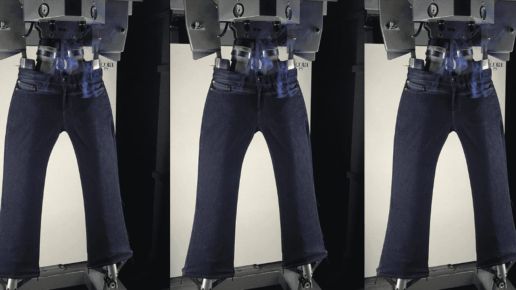
Picture credit: Fast Company
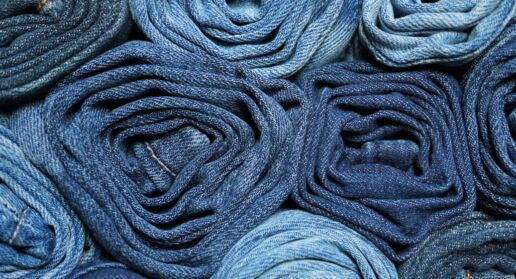
Picture credit: Science News for Students
Helping the Denim Industry Go Green
Combining economy and ecology, Sedo Engineering’s innovation is helping the denim industry go green. The Swiss innovation specialists have developed smart-INDIGO to help denim brands quickly move towards this sustainable production structure with more benefits at lower costs. Instead of toxic chemicals, Sedo Engineering uses only electricity and caustic soda to dissolve indigo dyes.
Giving out oxygen instead of toxic wastewater, smart-INDIGO reduces water use by 70 per cent, energy consumption by six times and carbon emission by ten times. The innovation is a “win-win solution for our clients”, says Werner Volkaert, managing director of Sedo Engineering.
With 17 smart-INDIGO machines operating worldwide, Sedo Engineering hopes to bring a revolutionary change to the denim industry.
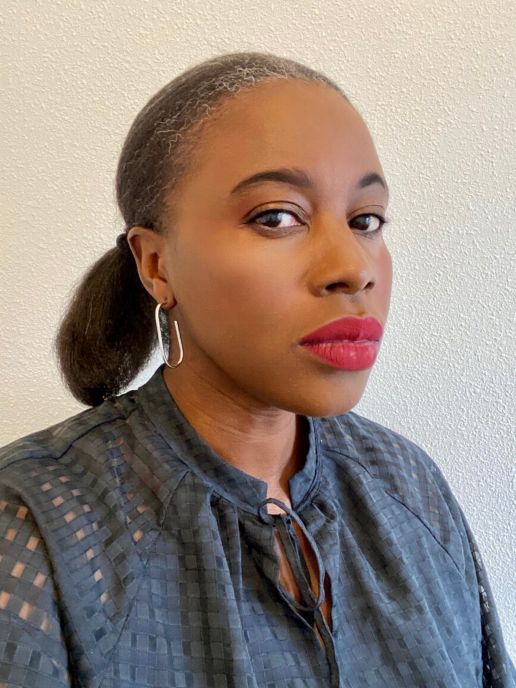
About the author
Founding editor-in-chief of FashNerd.com, Muchaneta has worked in the fashion industry for over 14 years. She is currently one of the leading influencers speaking and writing about the merger of fashion with technology and wearable technology.
Muchaneta Ten Napel | editor@fashnerd.com
———————————————————————–
Don’t miss to explore more sustainable fabrics and trims
from international suppliers in our ReSOURCE area!
Also discover further industry-disrupting innovations at our upcoming shows in Munich this summer:
5 Tech Trends Reshaping Apparel Manufacturing
5 TECH TRENDS RESHAPING THE FUTURE OF APPAREL MANUFACTURING
AN INDUSTRY INSIGHT BY FASHNERD FOUNDER MUCHANETA KAPFUNDE.
Transforming textile manufacturing and reshaping how the industry does business, new technologies are not only being adopted; they are trending. With various innovations on offer, here are the top five tech trends that have proven popular in helping apparel manufacturers create greater efficiency and build better relationships between producers, suppliers and customers.
1. Digitisation
It seems that digitisation in manufacturing really could be the perfect match. Defined by Gartner as “the use of digital technologies to change a business model and provide new revenue and value-producing opportunities”, digitisation is shifting manufacturing towards becoming a digital business.
Changing how products are designed, created, utilised and sustained, the digitisation of manufacturing has proven, to transform the operations, processes, and energy footprint of factories and supply chains while increasing opportunities in efficiency, productivity and accuracy in the textile industry.
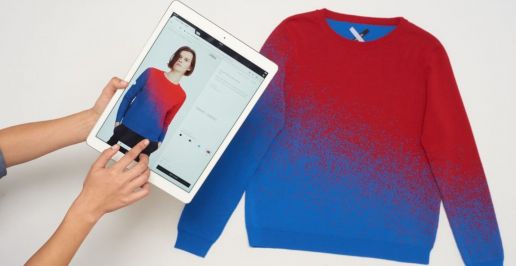
2. Fashion on Demand
Yes technology can finally support the need for fashion on demand. Technology is revolutionising what fashion on demand means. Once regarded as uneconomical, on demand fashion was once seen as impossible to achieve on a larger scale. The good news is that this is no longer the case since technology is now at a level that can support the rise of made-to-order and made-to-measure.
Therefore, fashion and textile businesses that want to create an on-demand supply chain can turn to new software, like the one provided by companies like Unmade, a London based startup that has worked with the likes of Christopher Raeburn and Avery Dennison. Offering convenience, fashion on-demand has also proven beneficial for fashion brands like New York-based Prabal Gurung, who have made the shift and now 25% of all their orders are now made-to-order.
Another great example is the knitwear company, Ministry of Supply. They have reportedly tested 3D printing knitted blazers and dresses and allowed their customers to choose different styles and colours. Within two days, the items were ‘printed’ and sent to customers. So again, innovation could mean that a fashion on-demand product could be delivered in the same amount of time as most fast-fashion labels, now that is progress.
3. Robotics
Want to implement robotics into your textile manufacturing process? Then read on. Groundbreaking advancements in recent years have allowed robotics in the textile industry to progress to the point where development has become highly advantageous for textile manufacturers. Ripe for transformation, robotics are becoming less of an obstacle and more of a technology that can positively transform the textile industry for the better.
As the automation wave continues to take over textile manufacturing, companies like Sewbo provide innovative solutions that support the automation of apparel manufacturing. Sewbo’s solution has been created to allow manufacturers to create higher-quality clothing at lower costs while shortening supply chains and lessening the long lead times that hamper the fashion and apparel industries. By helping to reduce the complexity of today’s intricate global supply network, the great thing about Sewbo’s technology is that it is suitable for a wide range of manufacturing applications.
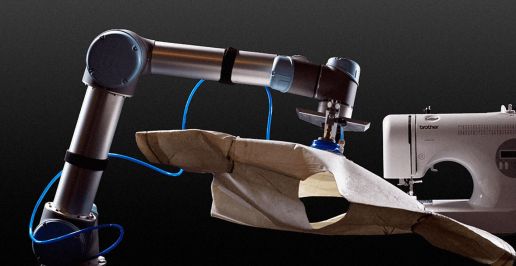
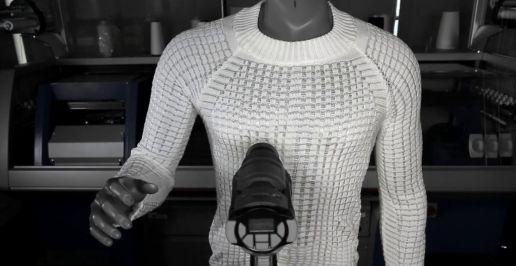

4. Machine Learning
A McKinsey report once stated that machine learning would reduce supply chain forecasting errors by 50% while also reducing lost sales by 65%. These numbers confirm that machine learning impacts textile manufacturing, especially in these three areas of business — operations, production, and post-production. Other great benefits of machine learning in manufacturing include improving product development, quality control, security and supply chain management.
Although some still argue that the technology is still in its infancy, those who have chosen to utilise machine learning fully have reduced their manufacturing costs and drastically improved product quality. Therefore, it is clear that using AI-powered systems in one’s manufacturing processes demonstrates that machine learning could bring numerous opportunities to enhance nearly every aspect of your business.
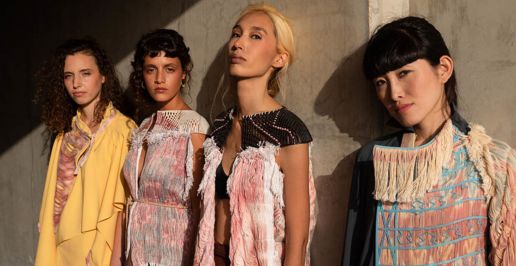
5. 3D Printing
Could 3D Printing be suitable for mass customisation? Well, some experts believe that 3D printing has the potential to help fashion and textile businesses who are looking to switch to an alternative customisable production method. Perhaps the biggest advantage of this type of tech tool is that it allows customisation choices to be implemented within the 3D file straight away before production.
If you are wondering whether there are any illustrative examples of fashion brands riding the mass customisation wave with 3D printing, the excellent news is that there is. Showing the way was the collaboration between Stratasys x Ganit Goldstein. Their partnership explored the melding of the traditional method with the latest 3D printing technology. “This is still a relatively new domain; we need to challenge ourselves to envision the next steps and to embrace this new design freedom to open up its true frontiers,” explained Naomi Kaempfer, Creative Director of Art, Design and Fashion at Stratasys.
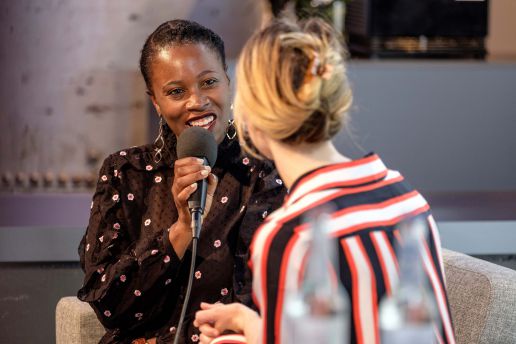
ABOUT THE AUTHOR
Founding editor-in-chief of FashNerd.com, Muchaneta has worked in the fashion industry for over 14 years. She is currently one of the leading influencers speaking and writing about the merger of fashion with technology and wearable technology.
Muchaneta Kapfunde | editor@fashnerd.com
Inclusive Sizing Technology
Inclusive Sizing Technology, Helping the Fashion Industry Represent the Underserved
AN INDUSTRY INSIGHT BY FASHNERD FOUNDER MUCHANETA KAPFUNDE.
With as many unique sizes as there are people on the planet, does it make good business sense for the fashion industry to continue to mass-produce 3 or 4 standard sizes? Yes, it is cost-saving, but with the new wave of body positivity breaking the sizing mould of yesteryear, maybe the time has come to move with the times. It is a positive thing to see the movement forcing fashion brands and retailers to turn to technology to meet most body shape needs and offer more than just standard basic styles.
Sizing Technologies, Worth the Investment?
Inclusive sizing technology is nothing new. Several solutions have been trying to correct the distorted and outdated image-standard designed to exclude plus-size consumers for a while now. Most famously was the ZOZOSUIT, a skin-hugging, high-tech bodysuit created to help shoppers purchase clothes, guaranteed the perfect fit every time. Now fast forward to 2021, and although sizing technology has advanced even further, shoppers are still struggling with common-fit issues. This begs the question, can fit technology fix fashions biggest demons, sizing and fit?
According to Narvar Inc, size and fit are among the top reasons customers return online orders. The e-commerce software company believes that this obstacle “further erodes retailers’ already thin profit margins”. Although it is a complicated problem, sizing technologies that offer a solution are being communicated to fashion businesses. One of those is 3D technology.
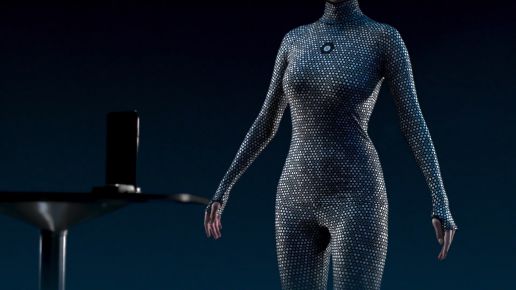
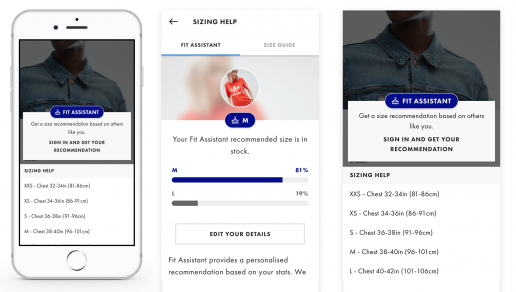
Revolutionising the fashion industry one label at a time, 3D technology is capable of helping fashion brands understand their consumer’s body shape so they can develop more accurate garments. One of those startups offering this type of innovation is CLO. On a mission to help the industry understand how ‘fit can build loyalty to a brand’, CLO 3D Simulation software feature allows brands to solve the question mark of their customer’s shape. Primarily built for cut-and-sew garments, CLO brags features like an API that enables customers to input their measurements to receive fit maps and view draped garments.
Fit Analytics is another solution. It is a technology that provides a “Fit Score” generated by response comparisons. CEO of Fit Analytics Sebastian Schulze believes that fashion brands cannot simply scale existing apparel specifications to create plus-size garments; they need fit technology to help them empower consumers and fix a decades-old problem.

Also worthy of mention is the digital fit solution app MySizeID. The direct to retailer technology helps consumers assess a garment’s sizing. Denim brand Boyish Jeans partnered up with MySize and saw a reduction of more than 30 per cent in two months. How? Well, the app’s AI-driven technology works by analysing user-entered data, like weight, gender or height, and then MySize’s proprietary machine learning database calculates the appropriate size. On their technology, Ronen Luzon, MySize CEO and founder told Sourcing Journal:
“Our app was designed specifically to take the guesswork out of sizing and make things as convenient as possible for online shoppers, so enabling customers to utilise our sizing recommendations and navigate directly from our app to retailers’ sites is a natural step for us when it comes to working directly with the consumer”.
Looking ahead, MySize is hoping to offer the same solution it does to the apparel industry to the footwear industry.
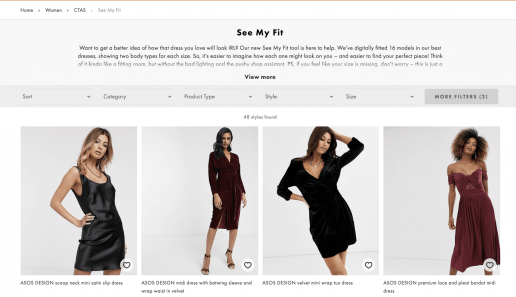
Yes, Fit Technology Has Gone Mainstream
When Lizzo, Ashley Graham and Meghan Trainor brought the inclusive sizing movement to the mainstream, fashion brands began to understand that they were walking away from profit by underserving a specific demographic. One of those brands was ASOS. Last year, in 2020, the British online fashion and cosmetic retailer trialed an augmented reality tool in collaboration with Israeli augmented reality (AR) company Zeekit to expand their offerings. “See My Fit” allowed ASOS customers to view 800 dresses on 16 different models, sizes 4 to 18, which heralding the online retailer as being at the forefront of fashion inclusivity. When released, Tim Carey, senior content manager at ASOS Studios, told NBC News:
“With this trial of See My Fit, we’re using the latest in AR technology to put the power in our customers’ hands, so they can choose to view a dress on the model that they most identify with, in a way that wouldn’t be possible using traditional model-shooting techniques.”

Then there is Vero Moda, a fashion brand that worked with Presize. It is a fit solution that can be integrated with zero IT capacity. After applying the technology to its online store, the fashion brand saw an increase in its online revenue.
When it comes to reliability, Presize states on their website that a study conducted with 255 participants found that the startup showed greater body measurement accuracy for 90% of all subjects and scored a mean average error 55% lower than that of the second most accurate solution in the benchmarking.
Empowering fashion brands to offer a more personalised sizing experience is ZyseMe, a Germany based startup driven by a desire never to allow customers to compromise on fit. It is a solution that has been successfully cutting overproduction, waste and returns. In 2021 they partnered up with H&M. Together, the two companies offered on-demand production of men’s shirts with H&M LAB. Using AI algorithms, they generated a unique pattern for a shirt produced on demand and sent directly to the consumer. ZyseMe is now expanding to partner with several other retailers and brands.
Finding The Perfect Fit, A Sign of Changing Times
Doesn’t it make good business sense for fashion brands in this challenging market to not alienate the next generation of consumers? Fit-related innovation has proved to be the best way to meet the demand for size “ideals’ that do not skew towards smaller products while also fighting the growing number of returns and unnecessary overproduction.
Yes, fit technology might not have cracked the code to the perfect fit, but you should believe the hype because as the technology evolves, it is coming closer to promising “perfection and personalisation” than ever before. Acknowledging the existence of inclusive sizing solutions is no longer enough; adopting, adapting and executing them is.

ABOUT THE AUTHOR
Founding editor-in-chief of FashNerd.com, Muchaneta has worked in the fashion industry for over 14 years. She is currently one of the leading influencers speaking and writing about the merger of fashion with technology and wearable technology.
Muchaneta Kapfunde | editor@fashnerd.com
Latest Denim News on bluezone.show
We really can’t wait to welcome you again in person in Munich: BLUEZONE will take place from 31 August – 1 September 2021 as the first physical Denim trade show in 2021 at the Zenith area. Following the seasonal guiding theme BACK TO THE FUTURE, you can expect an incomparable premium portfolio of international weavers, manufacturers and denim innovators who present their latest fabric, accessory and print developments to the denim community.

Until then, the motto will continue to be: collect digital inspiration and information about the denim world, connect with other community members and thus prepare yourself optimally for your visit to the trade fair. This Is also exactly why we created the new lively digital home – for everyone interested in denim and all its facets. With the launch of the progressive Living Page, we offer a completely new experience through an interactive and dynamic approach featuring exclusive denim insights. Learn more about the launch of www.bluezone.show in this blog post.

“True to our BLUEZONE motto ‘denim beyond the seasons’, our special Living Page creates the perfect basis for the live talks and the development of innovative novelties which will be presented at our upcoming BLUEZONE show from 31 August to 1 September 2021”
Sebastian Klinder, Managing Director BLUEZONE
The Highlights and Innovations of the Indigo World
Industry news and stories are shared almost daily on our interactive homepage. In the UNMISSABLE NEWS on the HOME page you will find the latest news that move the industry: published by the market-leading media such as THE SPIN OFF, CARVED IN BLUE, SOURCING JOURNAL, J’N’C, STYLE IN PROGRESS and many more. The future-oriented and most sustainable developments that the entire industry is talking about are collected on THE SHOW page under LATEST DENIM INNOVATIONS. You can find particularly relevant information for your network on the BLUE COMMUNITY page under COMMUNITY NEWS.
The latest collaborations, unique collections, groundbreaking innovations, pioneering voices from the industry: thanks to the UNMISSABLE NEWS and the COMMUNITY NEWS, you won’t miss a thing! Take a look at the MUD JEANS X IKEA collaboration, for example, or learn more about our denim curator and well-known face of the denim industry Panos Sofianos, who talks with TENCEL‘s Michael Kininmonth about the concept of sustainability and its plans for our show in the “BLUE CAST” podcast.
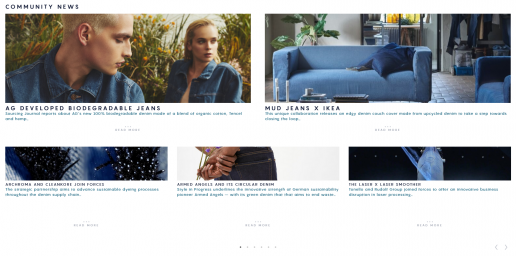
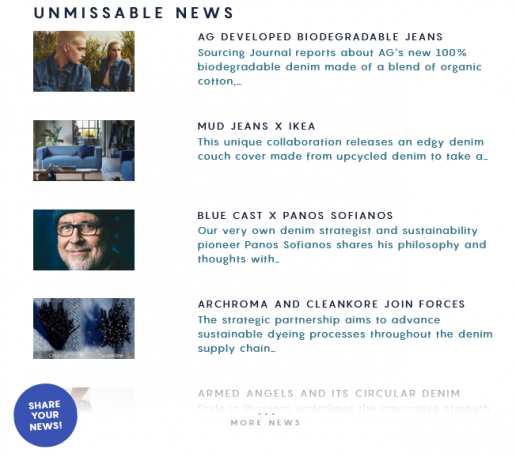
Unique Insider Information: Hot Minutes With, Who Really Is & Bluezone Speed Meeting
What is missing most at the moment? Personal contact, networking with interesting and inspiring personalities, getting to know small quirks and interesting stories!
This is exactly what our unique formats on BLUE COMMUNITY are made for: In the short HOT MINUTES WITH videos, you get to know the faces of the industry on a very personal level thanks to unusual questions. Find out Nicolas Sere‘s greatest dream and whether it has already come true, Stephanie Micci‘s extraordinary favorite song and why Alex Maillet has no plans to move away from Biarritz ever again.
In the 5-minute BLUEZONE SPEED MEETING videos, also available on BLUE COMMUNITY, you have the chance to get to know the innovation drivers in the denim industry. The minds behind global brands, such as Thibault Greuzat or Paolo Gnutti, provide insights into their company DNA and show 5 of their trend-setting developments in detail. See how clever the KT Trims team is in introducing their denim additionals.
WHO REALLY IS… you have probably asked yourself several times when you have heard the name of denim heads like Luca Braschi or Barbara Gnutti. And who is Theresa Walter, the woman who brings our BLUEZONE to life season after season? You can find the answers in exciting interviews on BLUE COMMUNITY.


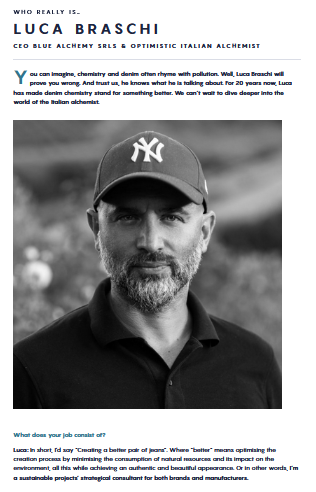
BLUEZONE wouldn't be BLUEZONE without its Denim Trends!
Anyone who has ever had the opportunity to browse through the BLUEZONE Denim Trend Forum knows that BLUEZONE is much more than a “simple” trade fair for denim fabrics. The trends that inspire buyers, designers and product managers of global fashion brands for their next collections are shown here!
Don’t miss out on this early insight into the upcoming trends from 31 August – 1 September 2021 at BLUEZONE. Before that, you can get an overview of the current visions on BLUE TRENDS. For example, find out from our denim curator Tilmann Wröbel how the current Trend Forecast came about, immerse yourself in the detailed descriptions of the 5 denim topics and let the visionaries inspire you creatively.
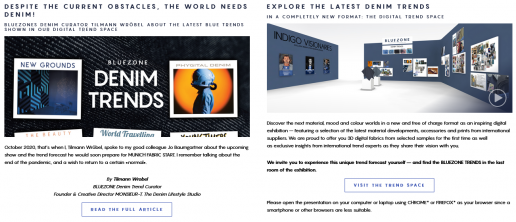
#bluezone #internationaldenimtradeshow #denimindustry #sustainablefabrics #deniminnovations #denimmaterial #tradeshow #backtothefuture
ABOUT BLUEZONE – THE INTERNATIONAL DENIM TRADE FAIR
Founded in 2003 as the first of its kind denim dedicated show, BLUEZONE has established itself as one of the most substantial business platforms for the global denim, street and sportswear market. Leading denim pioneers showcase their most recent denim novelties to the international denim and fashion community. With a strong commitment to excellence and a highly innovative approach, BLUEZONE is a key event to present quality materials, share know-how and discover innovations and the latest trends in a unique blue-blooded environment for denim beyond the seasons. Simultaneously and right next to BLUEZONE, the International Fabric Trade Fair MUNICH FABRIC START showcases novelties in fabrics, accessories and prints twice a year so that visitors can source from a varied textile portfolio offered by some 1000 international suppliers. In between the shows, everyone interested in the denim industry is invited to discover news and denim stories on www.bluezone.show. The next BLUEZONE show takes place in Munich from 31 August – 1 September 2021.
Towards 3D Digital Innovation
3D Digital Innovation: Transitioning From Physical to Digital
AN INDUSTRY INSIGHT BY FASHNERD FOUNDER MUCHANETA KAPFUNDE.
As business practices in various sectors adjust to accommodate digital innovation, the textile industry has also started to shift direction. Driven by the growing need to rethink the industry’s approach to design, development and manufacturing, the textile business has finally started to turn to digital technology to help solve some of its industry-specific difficulties and complexities.
Under pressure to innovate, I am excited to witness 3D digitalisation finally taking centre stage in the textile industry. Propelled forward by the brand-new digital wave, textile businesses are setting new standards to future-proof the sector. Rethinking how they operate, more and more textile businesses are becoming less afraid to explore the benefits of transitioning from physical to digital. The majority are doing this by examining the advantages of merging textiles with digital experimentation. So, what exactly is 3D digital technology offering an industry notorious for being resistant to change?
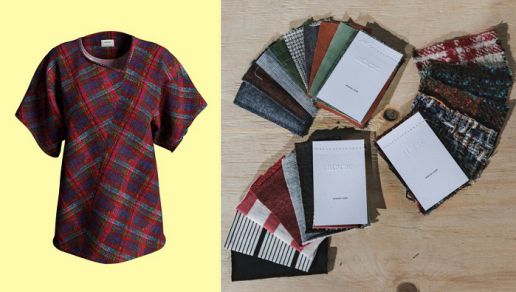
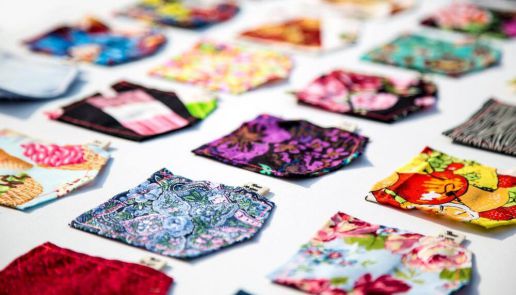
The Digitisation of Fabrics, A Powerful Asset?
Modern technologies are proving to be an influential asset when it comes to playing an integral part in changing the dynamics of the textile industry. With the potential to give textile businesses a competitive edge, we are starting to see 3D digital innovations being highlighted at textile trade shows, which, in my opinion, is a step in the right direction.
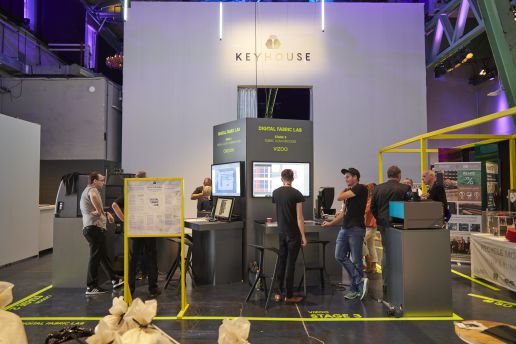
This is an opinion formed while frequenting various textile trade shows. As a regular visitor I am familiar with physical swatches. Now imagine if I, as a visitor (or customer), could access the digital twin of a piece of fabric along with its physical swatches. This concept was introduced at Munich Fabric Start (MFS) trade show during their 2019 edition of KEYHOUSE.
The Munich based trade show showcased fabric suppliers offering a digital twin alongside physical swatches. Partnering up with Digital Fabric Lab, they demonstrated the individual steps of fabric digitisation and how textile businesses can create a realistic image of digital fabric samples. The key takeaway was that physical no longer needs to be the master copy. More recently, in 2021, MFS invited attendees to indulge in 3D digital fabrics and trend inspirations showcased at their DIGITAL TREND SPACE.
PHYSICAL NO LONGER NEEDS TO BE THE MASTER COPY
Another digital platform making it possible to digitise fabric is Esmetex. “We aim to simplify the fabric development process; no more looking through swatch boxes and shipping swatches back and forth“, said the founder of Esmetex, Victor Chao, to Apparelresources.com. Adding:
“It is not practical for a designer to search through 18,000 fabric swatches when Frontier® can search based on whatever criteria the user is interested in and return all relevant fabric information on one page. This can be done on a desktop, laptop, tablet or smartphone by accessing our website or by installing our app.”
Chao is not alone in trying to help the textile industry move with the times. Emily Croneberger, manager marketing and industry programs, Cotton Inc, said in an interview:
“Digitising the fabrics is our first step in keeping cotton in a digital landscape”. She continued: “We have committed to creating an online digital library of our fabrics, free for download and use by brands, mills and accounts. We plan to move forward in promoting and expanding our digital assets.”
Although it is unlikely that physical samples will become a thing of the past anytime soon, the digital twin of fabric offers some advantages, like storing all fabric data in one central place. It is also worth taking note that solutions offered by digital material platforms like Swatchbook, also make it easier to verify the physical textiles’ authentication. For those attending shows, this type of tech solution makes viewing the fabrics more effortless while helping textile businesses be less wasteful when it comes to physical material samples and swatches.
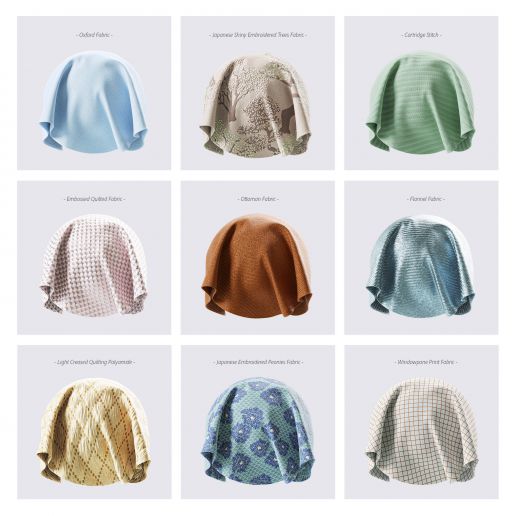
The Wonder Of Digitally Transformed Fabric
As industries transform to meet global changes, we have seen a rise in the adoption of newly emerging technologies. It is these genius ideas that have allowed the textile industry to take material digitisation to the next level. By hybridising the physical world with the digital one, textile companies that once relied on physical meetings at trade shows are now turning to innovative textile technologies to help them digitally transform their fabric during the global pandemic. One of these solutions is Scanatic™ Nuno Fabric Scanner provided by tg3ds.
Digitally powering the textile industry, the tg3ds studio uses an intelligent imagery processing engine to capture 3D texture display properties of fabrics in the smallest digital footprints. Another solution provider is Twinbru. They have made a name for themselves by setting an industry standard when it comes to making it possible for digital fabrics to be used in all virtual settings, like AR, VR and even game design.
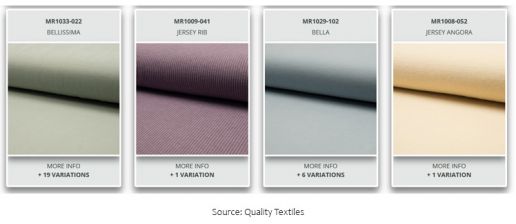
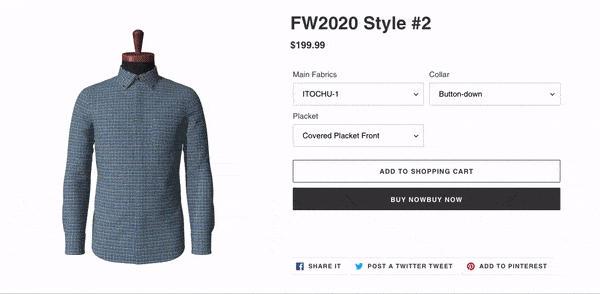
Ready for Limitless Possibilities?
When the world of “all things digital” merges with one of the oldest industries, you know it’s time to stand up and take notice. If you are a fabric mill, a garment manufacturer, or a textile brand, now is the time to leave outdated methods behind and transition your product from physical to digital. For example with help from companies like CLO Virtual Fashion, who can accurately emulate drape-sensitive fabrics such as lightweight wovens and jerseys with various material properties, more on this here. Yes, there are still imperfect kinks to the technology, like not being able to mimic complex behaviour of materials, but that does not make innovations like 3D Digital plan B; it should always be ‘the plan’.
So why embrace digital transformation? If you want to become faster, more relevant and more cost-efficient, now is the time to capitalise on all the possibilities that digitalisation offers. Yes, some might argue that the technology is not industry-ready enough to replace physical samples with virtual ones, but we can all agree that a new textiles economy is arising, and it makes sense to be a part of it.

ABOUT THE AUTHOR
Founding editor-in-chief of FashNerd.com, Muchaneta has worked in the fashion industry for over 14 years. She is currently one of the leading influencers speaking and writing about the merger of fashion with technology and wearable technology.
Muchaneta Kapfunde | editor@fashnerd.com
Denim Trend #5: Youngtimers
As we enter a new decade of denim, we see how the ongoing current global crisis does not limit us, we keep each other safe as it keeps us in but WE ARE ALL IN this together. Our denim world is shaped by the world’s reactions, anticipations and innovations. We look forward with strength and prospects for what we achieve today.
The five denim trends reveal the blueprints for a new physical and digital future, our new ‘phygital’ world. A new urbanity shows us a life in harmony with Mother Earth. Ethnic influences brought back from world travels are key to understanding what will nourish us and without a doubt, blow our denim heads in the upcoming seasons.
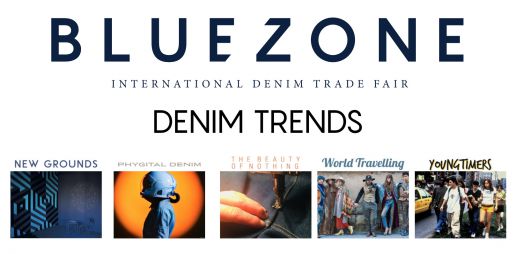
The BLUEZONE Trend Team presents the 5 trend themes for WE ARE ALL IN:
NEW GROUNDS the growing importance of new playgrounds for denim
PHYGITAL DENIM created for the makers and workers of our future
BEAUTY OF NOTHING discovering the beauty in things which do not change
WORLD TRAVELLING memories of world travels and souvenirs nurture our minds and fantasy
YOUNGTIMERS finding a fresh beauty in the old styles of yesterday
BLUEZONE TREND THEME #5 YOUNGTIMERS
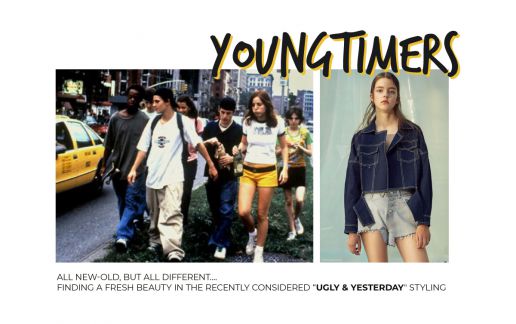
– Recently old becomes recently new
– A proper fit-chaos
– Not so old streetstyles
– Neo-vintage or inspired
– Contrast stitchings
– Violated washes
– Loud and barking
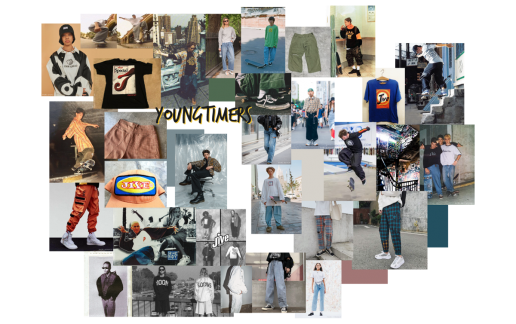
Denim Trend #4: World Travelling
As we enter a new decade of denim, we see how the ongoing current global crisis does not limit us, we keep each other safe as it keeps us in but WE ARE ALL IN this together. Our denim world is shaped by the world’s reactions, anticipations and innovations. We look forward with strength and prospects for what we achieve today.
The five denim trends reveal the blueprints for a new physical and digital future, our new ‘phygital’ world. A new urbanity shows us a life in harmony with Mother Earth. Ethnic influences brought back from world travels are key to understanding what will nourish us and without a doubt, blow our denim heads in the upcoming seasons.

The BLUEZONE Trend Team presents the 5 trend themes for WE ARE ALL IN:
NEW GROUNDS the growing importance of new playgrounds for denim
PHYGITAL DENIM created for the makers and workers of our future
BEAUTY OF NOTHING discovering the beauty in things which do not change
WORLD TRAVELLING memories of world travels and souvenirs nurture our minds and fantasy
YOUNGTIMERS finding a fresh beauty in the old styles of yesterday
BLUEZONE TREND THEME #4 WORLD TRAVELLING

– Souvenirs from around the world
– Ethnic & indigenous influences
– Artisanal & crafted accents
– Flowers, prints, flags & rural icons
– Mixing slim and wide volumes
– Mixing international hero-products
– Softness & pampering
– Luxury & simplicity
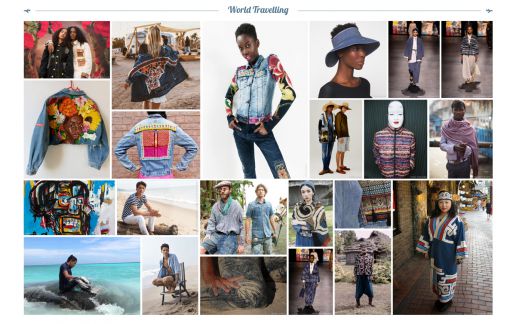
Denim Trend #3: Beauty of Nothing
As we enter a new decade of denim, we see how the ongoing current global crisis does not limit us, we keep each other safe as it keeps us in but WE ARE ALL IN this together. Our denim world is shaped by the world’s reactions, anticipations and innovations. We look forward with strength and prospects for what we achieve today.
The five denim trends reveal the blueprints for a new physical and digital future, our new ‘phygital’ world. A new urbanity shows us a life in harmony with Mother Earth. Ethnic influences brought back from world travels are key to understanding what will nourish us and without a doubt, blow our denim heads in the upcoming seasons.

The BLUEZONE Trend Team presents the 5 trend themes for WE ARE ALL IN:
NEW GROUNDS the growing importance of new playgrounds for denim
PHYGITAL DENIM created for the makers and workers of our future
BEAUTY OF NOTHING discovering the beauty in things which do not change
WORLD TRAVELLING memories of world travels and souvenirs nurture our minds and fantasy
YOUNGTIMERS finding a fresh beauty in the old styles of yesterday
BLUEZONE TREND THEME #3 THE BEAUTY OF NOTHING
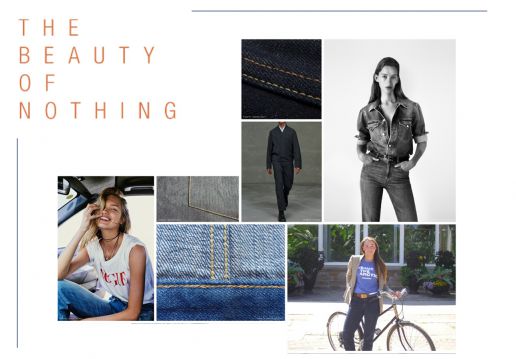
– The invisible beauty
– No design, less is more
– Timeless design
– Subtleness
– It’s all in the detail, of the detail…
– Rugged durability (sustainability through endless product life)
– A life in one denim
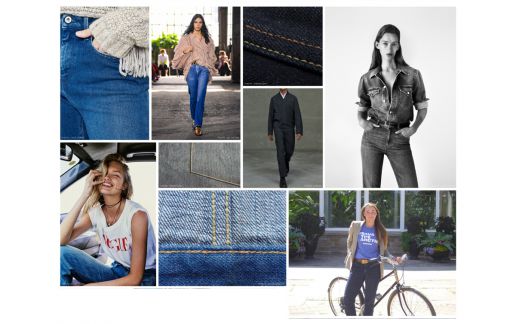
Denim Trend #2: Phygital Denim
As we enter a new decade of denim, we see how the ongoing current global crisis does not limit us, we keep each other safe as it keeps us in but WE ARE ALL IN this together. Our denim world is shaped by the world’s reactions, anticipations and innovations. We look forward with strength and prospects for what we achieve today.
The five denim trends reveal the blueprints for a new physical and digital future, our new ‘phygital’ world. A new urbanity shows us a life in harmony with Mother Earth. Ethnic influences brought back from world travels are key to understanding what will nourish us and without a doubt, blow our denim heads in the upcoming seasons.

The BLUEZONE Trend Team presents the 5 trend themes for WE ARE ALL IN:
NEW GROUNDS the growing importance of new playgrounds for denim
PHYGITAL DENIM created for the makers and workers of our future
BEAUTY OF NOTHING discovering the beauty in things which do not change
WORLD TRAVELLING memories of world travels and souvenirs nurture our minds and fantasy
YOUNGTIMERS finding a fresh beauty in the old styles of yesterday
BLUEZONE TREND THEME #2 PHYGITAL DENIM
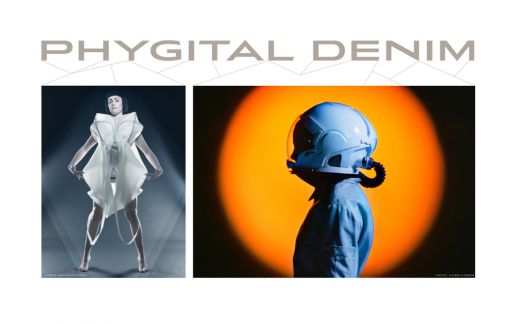
– Digitisation in denim design…fabrics, styling, interactive products
– Digitisation in denim marketing… visualisations, communication & promotion
– From fungus to yarn…denim fabrics made from bacteria and organics
– Any indigo fabric innovation but… NO cotton, NO PE, NO PET
– Metallics and coatings… only sustainable will do
– Protection: denim to protect against microbia, virus, rashes, scratches…
– For a work, utility & active lifestyle
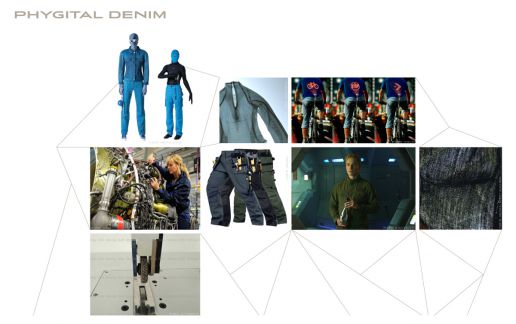
Denim Trend #1: New Grounds
As we enter a new decade of denim, we see how the ongoing current global crisis does not limit us, we keep each other safe as it keeps us in but WE ARE ALL IN this together. Our denim world is shaped by the world’s reactions, anticipations and innovations. We look forward with strength and prospects for what we achieve today.
The five denim trends reveal the blueprints for a new physical and digital future, our new ‘phygital’ world. A new urbanity shows us a life in harmony with Mother Earth. Ethnic influences brought back from world travels are key to understanding what will nourish us and without a doubt, blow our denim heads in the upcoming seasons.

The BLUEZONE Trend Team presents the 5 trend themes for WE ARE ALL IN:
NEW GROUNDS the growing importance of new playgrounds for denim
PHYGITAL DENIM created for the makers and workers of our future
BEAUTY OF NOTHING discovering the beauty in things which do not change
WORLD TRAVELLING memories of world travels and souvenirs nurture our minds and fantasy
YOUNGTIMERS finding a fresh beauty in the old styles of yesterday
BLUEZONE TREND THEME #1 NEW GROUNDS
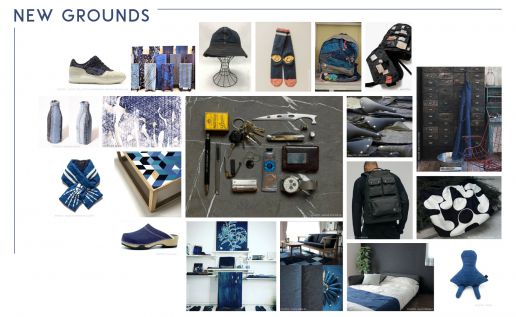
– Urban moves to the countryside, new « utility needs »
– Country is in…new earthy poetry
– Durable quality vs objects of consumption
– Fashion food…denim in the kitchen, cookware and utensils
– Vegan denim…patches & trims
– Interior design…objects, vases, home furnishings & denim furniture
